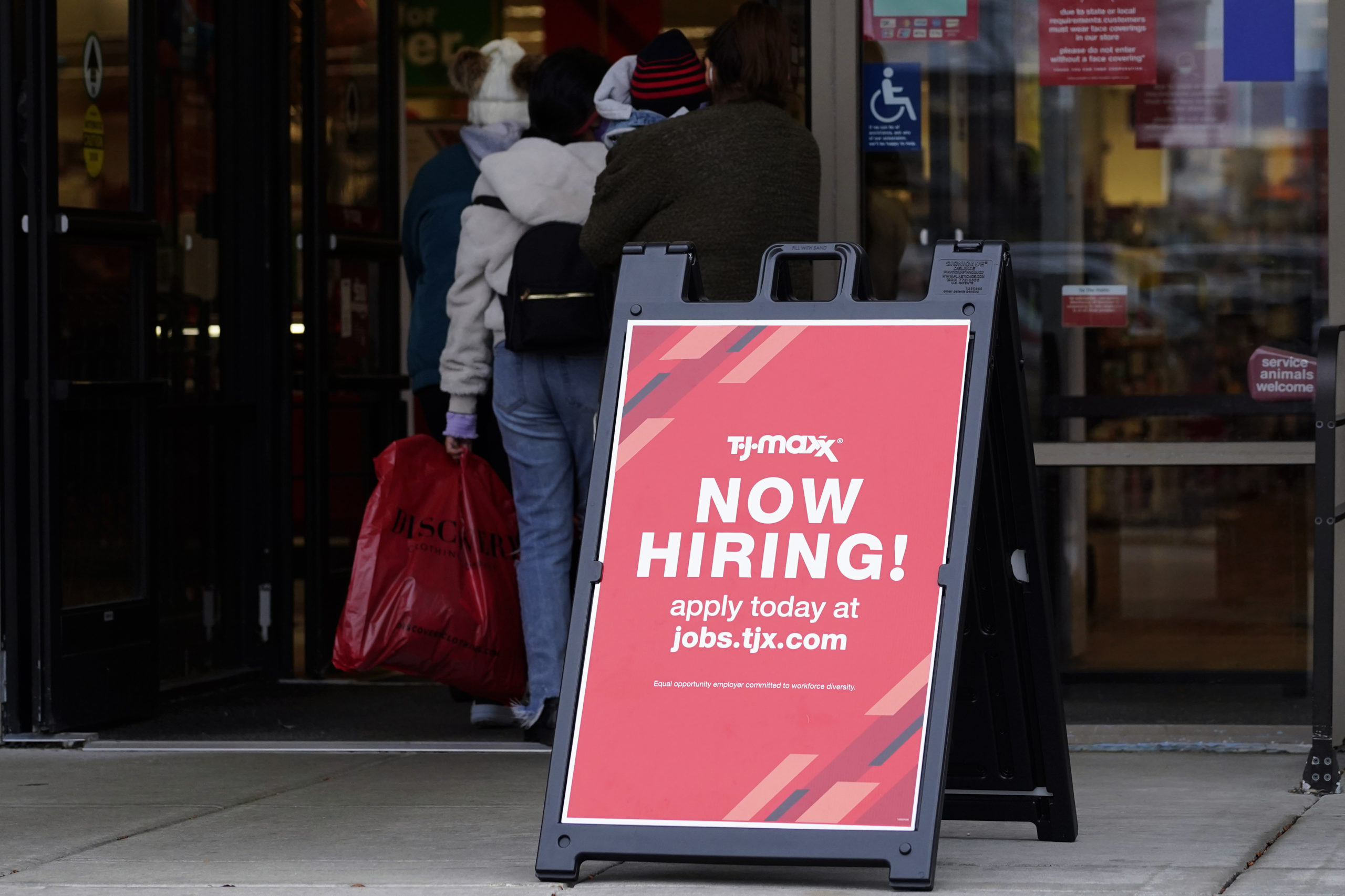WASHINGTON (AP) — The message the U.S. jobs report sent Friday was a surprising one: Despite a surge in viral cases in January, the labor market is so healthy that employers kept hiring last month at a pace that far surpassed anyone’s expectations.
Before Friday, the widespread view was that COVID-19’s highly transmissible omicron variant had kept people home and held down hiring in January. Some economists even predicted a job loss for the month. Instead, employers added 467,000 jobs.
At the same time, though, the sizzling job market means that inflation will likely keep simmering, all but ensuring that the Federal Reserve will raise interest rates several times this year to try to slow the steep price increases — for food, gas, rent, cars and many other items — that have squeezed millions of households.
Yet the jobs picture seems to be steadily brightening, with wages up, layoffs down and many employers eager to fill jobs. In its report Friday, the government sharply upgraded its estimates of job growth for November and December, too.
“What we’re really seeing here is businesses learning how to live with the virus and operate with the virus,’’ Labor Secretary Marty Walsh said.
He noted that the proportion of Americans who teleworked rose from 11.1% in December to 15.4% last month, suggesting that many employees were able to work from home even as omicron cases surged.
Over the past year, the economy has added more than 550,000 jobs a month, extending its steady rebound from 2020’s deep two-month recession. Still, the United States remains 2.9 million jobs short of the number it had in the pre-pandemic month of February 2020.
Here are five takeaways from the January jobs report:
___
BETTER THAN WE THOUGHT
Not only were the January jobs numbers unexpectedly large, but the Labor Department reported that hiring late last year was much stronger than it had originally thought. It revised up its estimate of the number of jobs employers added in November and December by a combined 709,000.
Andrew Flowers, labor economist at the recruiting firm Appcast, suggested that the upgraded revisions for job growth “radically changed our understanding of the labor market’s trajectory. Instead of a slowing trend from last summer, job growth looks to be trending upward.’’
___
HELP WANTED AT RESTAURANTS AND HOTELS
Among the most surprising figures in Friday’s jobs report was that hiring at restaurants and hotels — the kinds of employers that would presumably delay hiring during a wave of viral cases — rose sharply in January despite the omicron surge. The hiring gains in that sector suggested that many Americans have learned to live with the virus and are continuing to go out to eat and take trips. Restaurants and bars added more than 108,000 jobs last month, hotels nearly 23,000.
“It confirms that each successive wave of the virus is having a smaller and smaller impact on activity and labor demand,’’ said Brian Coulton, chief economist at Fitch Ratings.
___
OFF THE SIDELINES
The unemployment rate ticked up from 3.9% in December to a still-low 4% in January. But it did so, at least in part, for an encouraging reason: Many Americans came off the sidelines of the workforce and started looking for a job, and not all of them found one right away. As a result, they were counted as unemployed.
The percentage of people working or looking for work — the so-called labor force participation rate — rose last month to 62.2%. That was the highest such rate since March 2020, though still below pre-pandemic levels of more than 63%.
The influx of workers could help ease the labor shortages that have left many companies struggling to keep up with surging consumer demand.
“There are financial reasons to return to the workforce,’’ said Bernard Baumohl, chief economist at the Economic Outlook Group. “Washington is no longer mailing out emergency checks to households, and inflation continues to erode the purchasing power of consumers.’’
___
RISING PAY
Because the economy’s unexpectedly swift rebound has left employers scrambling to find workers, many have responded by jacking up wages. Hourly pay rose last month by a strong 5.7% for all workers and 13% for those who work for hotels, restaurants and other leisure and hospitality companies.
Still, pay overall hasn’t been keeping up with inflation, which in December was running at the fastest year-over-year rate since 1982. In December, average hourly wages were actually down 2% from a year earlier after adjusting for higher prices.
___
A GREENLIGHT FOR THE FED
The strength of the jobs report helps clears the way for the Federal Reserve to reverse its policy of keeping interest rates super-low to protect the economy from coronavirus fallout. The central bank has indicated that it will start raising its benchmark rate, now near zero, several times beginning in March to try to combat high inflation.
“The (jobs) report in its totality still points to a robust labor market, characterized by low unemployment and strong job creation, that managed to successfully push through the disruptions created by the omicron variant,’’ said Jim Baird, chief investment officer at Plante Moran Financial Advisors. “Not that the Fed needed another reason to tighten in the near term, but they just got it.’’

